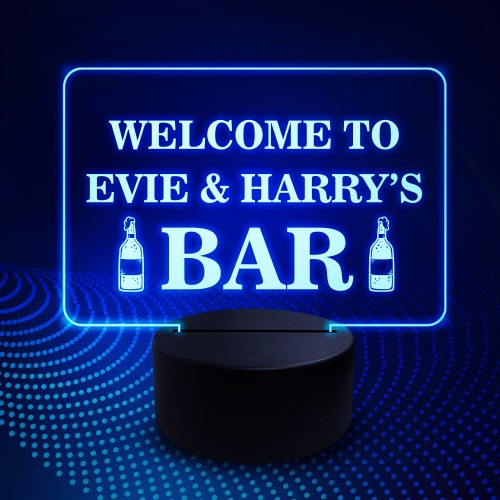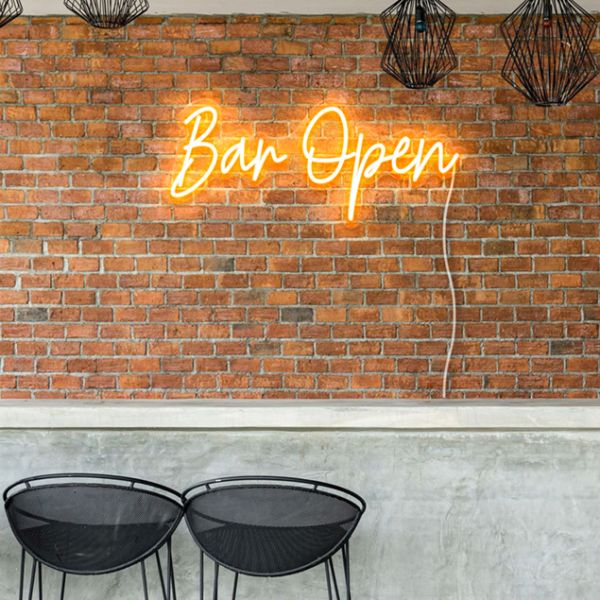Free Advice To Selecting Bar Runners
Wiki Article
How Can Bar Signs Differ Based On Their Location?
The bar signs vary greatly in terms of location, and the design, purpose and location are crafted to maximize their effectiveness in specific regions. This is a summary of the different bar signs, based on their location. Signs for the exterior
Use: To create an identity for your bar and attract new patrons.
Features: Beautiful and large and beautiful, with a variety of lighting fixtures that shine at night.
Materials: Durable materials like neon, metal, LED or weather-proof vinyl.
Examples of these are: Name signs for main bars Logo signs, bar names, and marquee signs above the entryway.
2. Signs of entry
Welcome patrons to the store and provide basic information.
Often with branding elements The features are often simple and welcoming.
Materials Signs made of wood, metal signs and illuminated signs.
Signs such as "Welcome", operational hours, and announcements about special events.
3. Interior wall signs
Goals: To improve decor, give information, and create ambience.
Features: Available in a variety of sizes and style, to match the interior décor.
Materials: Wood, metal, chalkboard, acrylic.
Examples are menu boards, décor signage and inspirational quotes.
4. Signs for Behind the Bar
Purpose: To highlight key aspects of the bar, such as its name, its signature drinks or specials.
Highlights A prominent and well lit focal point.
Materials include neon, LED and digital displays. Chalkboards or digital displays.
Examples include bars have name signs, drink-specials boards, or digital menus.
5. Ceiling and Hanging signs
Use: For information on direction or to add a touch of decor.
Features Suspended from ceiling, and visible from a variety of angles.
Materials: Lightweight, lightweight materials such as foam board, metal or acrylic.
For instance: hanging decorative signs and themed props.
6. Tabletop Signs
The purpose is to provide details about the restaurant's services to patrons at tables.
Features A small size that is easily readable when seen from a distance.
Materials: wood, laminated papers, and acrylic.
Examples: Menus for Drinks Table Numbers, Promotional Cards, and QR Code Stands.
7. Restroom Signs
Utilization: To clearly define the location and kind of restrooms.
Most often, they are accompanied by very clear symbols and text.
Materials: Metal, plastic, wood.
Signs for women's and men's bathrooms, and signs for restrooms that are unisex.
8. Directional Signs
Guide patrons through various areas of the bar.
Labels and arrows that are easily readable.
Materials: Metal, acrylic, wood.
Signs that indicate restrooms, exits and different seating areas are examples.
9. Window Signs
The goal of the sign is to attract passersby's attention and provide them with information about your establishment.
Specifications: Visible outside, typically with lighting.
Materials: Vinyl decals, neon, LED.
Examples: advertisements and promotional signs, event announcements and hours of operation.
10. Signs to promote events and promotions
Use: To notify patrons about special occasions, seasonal promotions or other promotions.
Features: Often brief and attractive.
Materials Include: Foamboard, vinyl and chalkboard.
Examples: Event posters, promotional banners and chalkboard specials.
Local considerations specific to the location
Visibility
Exterior and entrance signage Signs should be visible from afar to attract potential customers.
The signs for the bar's interior and behind-the-bar should be strategically placed to maximise impact and readability.
Durability
Exterior Signs - Materials must be weather resistant to stand up to outdoor conditions.
Interior Signs: They may be constructed using a larger selection of materials as they are protected against the elements.
Aesthetic Integration
Signs for behind-the bar and decorative signs: These should be a complement to the theme and interior design of the pub.
Informational and direction signs: They should be functional and yet blend with the décor.
Functionality
Signs for restrooms and directions The signs must be clearly visible and easy to understand to ensure customers can easily navigate.
Signs for events and promotions events should be temporary and changeable.
Lighting
Signs for windows and exteriors are typically illuminated to make them more visible in the evening.
Interior and Behind the Bar Signs Use lighting to create ambience or highlight specific areas.
Through adjusting the design material, layout and materials, bar owners are able to enhance both the function as well as the visual appeal of their establishments. They can also create an inviting and unified environment for their patrons. Follow the top cocktail bar sign info for site tips including signs for garden bar, bar pub signs, personalised pub signs, make a pub sign, pub wall sign, garden bar sign personalised, make your own bar sign, hanging pub signs personalised, indoor bar signs, a bar sign and more.

What Is The Difference Between Bar Signs In Light?
Lighting can have an enormous impact on bar signs which includes their general impact, visibility as well as the ambiance. Here are some of the ways in which the lighting of bar signs can be affected: Neon Signs
Characteristics: Bright, colorful, classic.
Lighting: Utilizes neon-filled gas tubes that produce illumination when they are electrically charged.
Uses : Perfect for creating an aged, retro-style look. Useful for bar names and logos.
Benefits: It's visible from an extended distance. It also has a nostalgic feel.
It's fragile, and repairs could be expensive.
2. LED Signs
Characteristics: Energy-efficient, versatile, modern.
Lighting: LEDs emit brilliant, bright light.
Uses: Perfect for outdoor and indoor signage, programmable displays and dynamic lighting effects.
Benefits: The LEDs are durable, energy efficient, and are programmable with animations or changes in color.
Disadvantages : Can be costly initially, but can save on energy and maintainance costs.
3. Backlit signs
Characteristics: Elegant, sophisticated, subtle.
Lighting: A transparent surface is illuminated by fluorescent lights or LEDs to create a soft light.
Applications: Typically utilized on modern bar signs, menu boards, and branding elements.
Benefits: Enhances the reading ability of smaller print in dim light conditions.
Advantages: Simpler installation, however higher initial cost.
4. Signs Edge-Lit
Characteristics: Sleek, contemporary, stylish.
Lighting Use LEDs to highlight the edge of a sign, typically acrylic.
Applications: Modern, minimalist designs.
Benefits: Energy-efficient, creates a distinctive and sophisticated appearance.
Limitations: Restricted to certain designs.
5. Ambient/Accent Lighting
Characteristics: Subtle, atmospheric, decorative.
Lighting: Utilizes indirect light sources to emphasize and highlight signs.
Uses: Enhances atmosphere and is a great way to display artwork or theme decor.
Benefits: It creates an atmosphere and depth. It can create an inviting and warm atmosphere.
Disadvantages: May not be able to provide enough direct illumination for readability.
6. Marquee Signs
Characteristics: Bold, theatrical, eye-catching.
Lighting: Use multiple lights or LEDs along the edges of the sign.
Applications : Popular for creating vintage films and for creating outdoor signs.
Advantages: Attractive and noticeable.
Advantages: May be expensive and requires regular maintenance.
7. Projection Signs
Characteristics: Dynamic, innovative, versatile.
Lighting: Uses projectors to project light and images onto a surface.
Uses: Perfect for promoting events, temporary displays, and other displays that are dynamic.
Benefits: No sign structure is needed.
Disadvantages
8. Fluorescent Signs
Characteristics: Bright, cost-effective, traditional.
Lighting: The fluorescent tubes used for illumination.
Uses : Usually employed on large outdoor and indoor signs.
Large signs are beautiful and appealing, and relatively inexpensive.
Disadvantages
Lighting Considerations
Visibility
Neon Signs and LED signs: They are excellent for grabbing attention, especially at night.
Signs with backlighting and LEDs that are edge-lit: Enhance readability and create a polished appearance.
Energy Efficiency
LED Signs are energy efficient and lasts for a long time.
The fluorescent and neon signs aren't as energy efficient, while neon is more fragile.
Aesthetic Appeal
Neon and Marquee signs are perfect for retro or vintage aesthetics.
For modern, clean designs, edge-lit and backlit signs are ideal.
Ambient Lighting: Enhances the overall atmosphere and ambiance.
Maintenance
LED Signs are durable and low-maintenance.
Neon and Fluorescent signs require regular maintenance and repair.
Cost
LED and Backlit Signs: Higher upfront costs but lower operational costs.
Fluorescent Signs: Lower initial cost, but more expensive long-term cost of energy.
Flexibility
The Projection Signs and LED signs provide a great deal of versatility when it comes to changing the content and display.
Traditional Signs: They are less flexible, but they usually achieve a certain look.
Choose the best type of lighting for your bar signs to enhance visibility, create an inviting ambience, and effectively convey your brand and promotions. Check out the most popular hanging pub signs for more recommendations including cocktail bar sign, gin bar sign, make a pub sign, signs for the bar, personalised bar signs, personalised outdoor bar signs, personalised pub signs, pub bar signs, bar wall signs, make your own bar sign and more.

How Do Bar Signs Differ From One Another In The Area Of Interactivity?
The interactivity of bar signs can vary to attract customers and enhance their experience. Here are the differences between bar signs with respect to their interaction. Static Signs
Traditional Design: Static signage relays information without any interaction.
Common Types: printed poster, painted murals and standard neon sign.
2. Digital Displays
Digital signs are capable of displaying real-time content, such as animations, multimedia, and updates.
Touchscreen displays can be used to play interactive menus, games and games as well as promotional content.
Benefits : Attract attention by delivering dynamic information. Encourage patron engagement.
3. QR Codes
Interactive Links QR codes printed on signage can be linked to menus, promotions or social media profiles.
Benefits: Provide easy access to more information, promotions, or loyalty programs.
4. LED Screens
Dynamic Messaging: LED screens may show scrolling text, animations or video content.
Interactivity: Touch-enabled LED screens enable patrons to interact, for example through menu selection or playing a game.
Benefits: Create immersive experiences to draw attention, and efficiently transmit information.
5. Projection Mapping
Immersive Experiences: Projection mapping transforms surfaces into dynamic displays that offer interactive visuals and story telling.
Interactivity: The patrons can interact through interactive elements, like games or virtual experiences.
Benefits: Improve the ambience and encourage social interactions.
6. Augmented Reality
AR (Enhanced Reality) overlays digital content onto the physical surroundings to offer interactive experiences.
AR-enabled signs: AR signs allow customers to interact with and view virtual components like cocktail recipes, or play virtual games.
Benefits: Engage customers and offer unique experiences to differentiate your bar.
7. Motion Sensors
Motion sensors are able to detect movement and activate interactive responses on signs.
Interactivity: Signs can respond to the movement of patrons by showing animations, altering content, or providing specific messages.
Benefits : Greater engagement, immersive environments, and delighting and surprising customers.
8. Social Media Integration
Internet Interaction: Posters that feature hashtags, or handles for social media could stimulate online interaction among patrons.
User-Generated Media: Ask customers to share images of signage on social media platforms. This can increase impact and visibility.
Benefits: Foster participation in the community, increase brand recognition, and produce user-generated contents.
9. Interactive Lighting
Dynamic Effects - LEDs and neon signs that react to sound or touch, and even movement.
Signs can be interactive and alter colors as well as brightness levels or patterns, depending on how patrons interact with them or with the surrounding.
Benefits: Create immersive atmospheres which enhance ambiance, as well as attract interest.
10. Gamification
Signs with Interactive Games or Challenges: These signs offer interactive games and challenges that keep the customers entertained and encourage them to participate.
Reward: Offer discounts or other rewards to players who finish challenges or who win games.
Benefits : Increases time of stay. Encourage social interaction. Promote repeat visits.
Through the incorporation of interactive features on signage, bar owners can create engaging, memorable experiences for patrons. They will also increase the visibility of their brand and differentiate their establishments in a highly competitive marketplace. Have a look at the recommended I loved this for cocktail bar sign for blog info including personalised outdoor bar signs, pub sign hanging, home made bar sign, personalised outdoor bar signs, buy bar signs, indoor bar signs, pub bar signs, make a bar sign, hanging bar sign, large bar signs and more.
